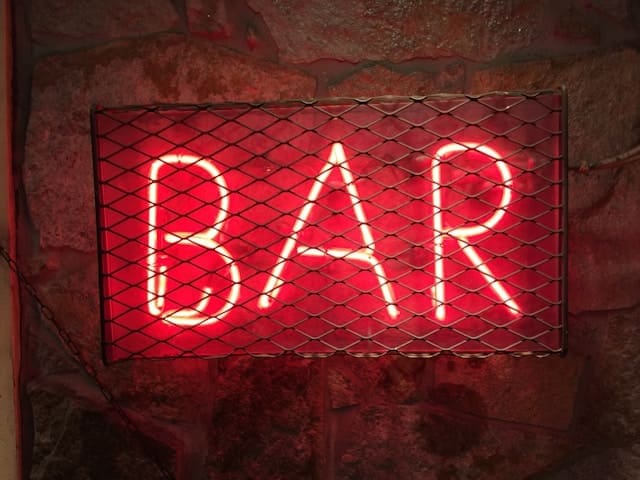New Jersey, a state known for its bustling highways and diverse urban landscapes, has witnessed a dramatic transformation in the way businesses use signage over the years. From classic painted signs to the radiant glow of neon, the signage landscape in New Jersey offers a fascinating reflection of changing aesthetic preferences and technological advancements. Let’s explore how signage has evolved in the Garden State, enhancing the visibility and appeal of local businesses.
Tracing the Roots: The History of Signage in New Jersey
The history of business signage in New Jersey dates back to the early days of hand-painted wooden signs, which merchants displayed outside their shops to attract passersby. These signs were often simple and utilitarian, with a focus on readability over aesthetics. As the state industrialized, metal signs with more durable and elaborate designs started to appear, reflecting a growing emphasis on brand identity. The introduction of electric lighting brought about a new era in signage, with illuminated signs ensuring 24/7 visibility, a crucial development for businesses along New Jersey’s heavily trafficked roads.
The Neon Renaissance: Lighting Up New Jersey’s Nightlife
In recent years, neon signs have experienced a resurgence in popularity across New Jersey, particularly among bars and nightlife venues. These custom neon signs are prized not only for their vibrant colors and nostalgic charm but also for their ability to create a distinctive atmosphere that can draw a crowd. Neon signage offers a visual throwback to the glitzy eras of the past while providing modern businesses with an effective tool for branding and customer engagement. As night falls, these glowing emblems become beacons that invite locals and tourists alike to enjoy the lively bar scenes of cities like Newark and Atlantic City.
Maximizing Visibility: Strategic Signage Placement in New Jersey
For businesses in New Jersey, the strategic placement of signage can significantly enhance visibility and attract more customers. Considering the state’s diverse geography—from dense urban areas to sprawling suburban landscapes—choosing the right locations for signs is crucial. Here are some key factors businesses consider when placing their signage:
- High Traffic Areas: Placing signs along busy streets, near intersections, or close to highways to capture the attention of passing motorists and pedestrians.
- Community Hubs: Positioning signs near popular community centers, shopping malls, or parks where large groups of people frequently gather.
- Public Transport Lines: Installing signs in close proximity to bus stops, train stations, or other public transportation hubs to reach commuters effectively.
- Event Venues: Utilizing spaces near concert halls, sports arenas, or theaters to leverage the influx of attendees before and after events.
- Historical or Tourist Sites: Choosing locations near New Jersey’s tourist attractions or historical sites, ensuring visibility to out-of-town visitors who are likely exploring the area.
By strategically placing their signs, New Jersey businesses maximize their exposure to both local patrons and visitors, turning every sign into a potent tool for marketing and engagement.
Signage Diversity Across Industries
In New Jersey, different businesses employ a variety of signage types to communicate with their audience, driven by industry-specific needs and customer expectations. Retail stores, for example, often use large, bold letter signs that can be easily read from a distance, crucial for attracting customers in busy shopping districts or along highways. Professional services such as law firms and medical offices typically prefer more subdued and elegant signage, emphasizing sophistication and trustworthiness. Meanwhile, restaurants and cafes frequently incorporate thematic elements into their signs, using imagery like steaming cups of coffee or plates of food to visually entice potential customers.
The Impact of Digital Signage
The advent of digital signage has introduced dynamic and interactive elements to New Jersey’s signage scene. Digital signs allow businesses to display changing content, such as promotions, news, or weather, keeping the information fresh and engaging for viewers. This flexibility is particularly advantageous for businesses that need to communicate timely messages or want to catch the eye of consumers with vibrant, moving images. From digital billboards along the Turnpike to small screens in local deli windows, digital signage is becoming an increasingly common sight across the state.
Conclusion
The evolution of signage in New Jersey reflects broader trends in technology, design, and consumer behavior. As businesses continue to innovate and adapt, the state’s signage landscape remains a vibrant and ever-changing tableau that not only serves a practical marketing function but also adds character and color to the local environment. Whether through the retro allure of neon or the modern sophistication of digital displays, New Jersey’s businesses know that a great sign is not just seen—it makes a statement.
The New Jersey Digest is a new jersey magazine that has chronicled daily life in the Garden State for over 10 years.
- Staffhttps://thedigestonline.com/author/thedigeststaff/
- Staffhttps://thedigestonline.com/author/thedigeststaff/
- Staffhttps://thedigestonline.com/author/thedigeststaff/
- Staffhttps://thedigestonline.com/author/thedigeststaff/


